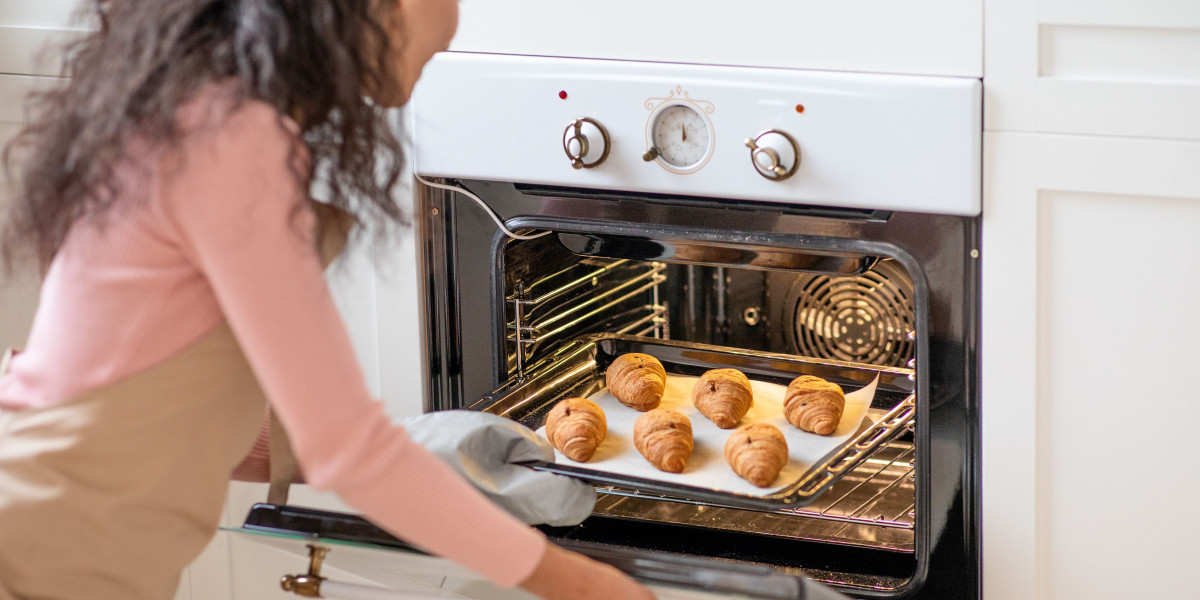The Ultimate Guide to Kitchen Built-In Ovens: What You Need to Know
When it concerns modern-day kitchen areas, the built-in oven is more than just an appliance; it is a declaration of style, efficiency, and functionality. Built-in ovens are created to integrate seamlessly into kitchen cabinetry, offering a streamlined look that enhances the total design of the kitchen. This short article explores the different types, benefits, and considerations of kitchen built-in ovens, and provides insights to assist you make an informed purchasing decision.
Tabulation
- What is a Built-In Oven?
- Types of Built-In Ovens
- 2.1 Single Ovens
- 2.2 Double Ovens
- 2.3 Steam Ovens
- 2.4 Wall Ovens
- Benefits of Built-In Ovens
- Key Features to Look For
- Installation Considerations
- Frequently Asked Questions
- Conclusion
1. What is a Built-In Oven?
A built-in oven is an oven designed to be installed within kitchen cabinets rather than as a freestanding system. This style permits greater visual versatility while making the most of readily available kitchen area. Built-in ovens can be found in different sizes and configurations, accommodating varied culinary needs and kitchen styles.
2. Types of Built-In Ovens
Comprehending the different types of built-in ovens can assist consumers pick the ideal one for their kitchen setups and cooking designs.
2.1 Single Ovens
Single ovens are compact and created to fit within basic cabinet widths. These ovens generally offer sufficient area for daily cooking needs, such as baking or roasting. They can be found in different Cookology 72L Electric Oven - Multifunction & Convenient or gas designs and are often easy to use with uncomplicated controls.

2.2 Double Ovens
For individuals who frequently host large gatherings or enjoy cooking multi-course meals, double ovens can be a lifesaver. These units include 2 different oven compartments and deal increased cooking capability, permitting simultaneous baking or roasting at various temperature levels.
2.3 Steam Ovens
Steam ovens use steam to cook food, which helps maintain moisture and nutrients. These ovens are progressively popular among health-conscious individuals and gourmet cooks. Steam ovens can be built-in alongside conventional ovens for a flexible kitchen setup.
2.4 Wall Ovens
Wall ovens are developed to be set up within a wall rather than under counter tops. They offer convenient access and can be integrated cookers with other wall-mounted kitchen appliances. Wall ovens may be offered as single or double units.
3. Advantages of Built-In Ovens
Choosing a built-in oven comes with many advantages:
- Space Efficiency: Built-in ovens can be tucked into cabinetry, maximizing valuable kitchen space.
- Aesthetic Appeal: They offer a cleaner, more contemporary appearance than standard freestanding ovens.
- Range of Designs: Built-in ovens are offered in several finishes, consisting of Russell Hobbs Haden 60cm Electric Built-In Oven with Fan Assist Stainless Steel Electric Oven - Going Listed here --steel, black, and white, allowing combination with different kitchen styles.
- Boosted Functionality: Many built-in ovens come equipped with sophisticated functions such as self-cleaning modes, touch screens, and convection technology.
4. Secret Features to Look For
When selecting a built-in oven, consider the following functions to enhance cooking functionality:
- Temperature Range: A wider temperature range enables greater flexibility in cooking different meals.
- Self-Cleaning Options: Look for models that use self-cleaning abilities to conserve time and effort on maintenance.
- Convection Cooking: Convection ovens distribute air to prepare food evenly and rapidly.
- Wi-Fi Connectivity: Some modern built-in ovens featured Wi-Fi ability, allowing users to manage settings or pre-heat the oven from another location.
- Security Features: Check for features like automated shut-off, child locks, and cooling systems to ensure maximum safety.
5. Setup Considerations
Before purchasing a built-in oven, certain installation aspects require to be addressed:
- Size and Dimensions: Ensure the picked oven fits the designated space. Procedure the height, width, and depth of the designated installation location.
- Ventilation: Gas ovens require adequate ventilation to guarantee safety. Consult an expert if required.
- Electrical Requirements: Check the electrical requirements of the picked unit to guarantee compatibility with existing outlets.
- Expert Installation: If you're not experienced in home appliance installation, it may be a good idea to look for professional assistance to make sure appropriate fitting and compliance with local codes.
6. Frequently Asked Questions
Q1: How do built-in ovens differ from freestanding ovens?A: Built-in ovens are installed in cabinets for a seamless appearance, while freestanding ovens stand alone and do not require built-in setup.
Q2: Can you install a built-in oven yourself?A: While some people with experience might select to set up an oven themselves, it is usually recommended to hire a professional to guarantee electric or gas connections are securely set up. Q3: Are built-in ovens energy-efficient? A: Many built-in ovens feature energy-saving innovation and are often more efficient compared to older models. Always check energy rankings before acquiring. Q4: Do built-in ovens require special maintenance?A: Regular maintenance consists of keeping
the interior tidy and examining for any wear and tear. Self-cleaning best fit their cooking design and style choices. Whether an experienced chef or a home cook, the advantages of selecting a built-in oven are clear. By considering the information outlined in this guide, individuals can make educated choices that will cause years of cooking pleasure. Extra Resources For further info on kitchen appliances, consider taking a look at the list below resources: Consumer Reports: Product evaluations and purchasing guides. Energy Star: Energy-efficient appliance suggestions. Home Improvement Stores: Local professionals can supply additional insights and suggestions. Embarking on a kitchen restoration or upgrade can be
models can streamline this task significantly. Q5: What is the typical lifespan of a built-in oven?A: The average lifespan of a AEG 6000 Built-In Electric Double Oven - Buy Now oven is typically in between 10 to 15 years, depending on usage and upkeep practices. 7. Conclusion Buying a built-in oven can improve both the performance and aesthetic appeals of your kitchen. With different types and functions available, consumerscan select models that







